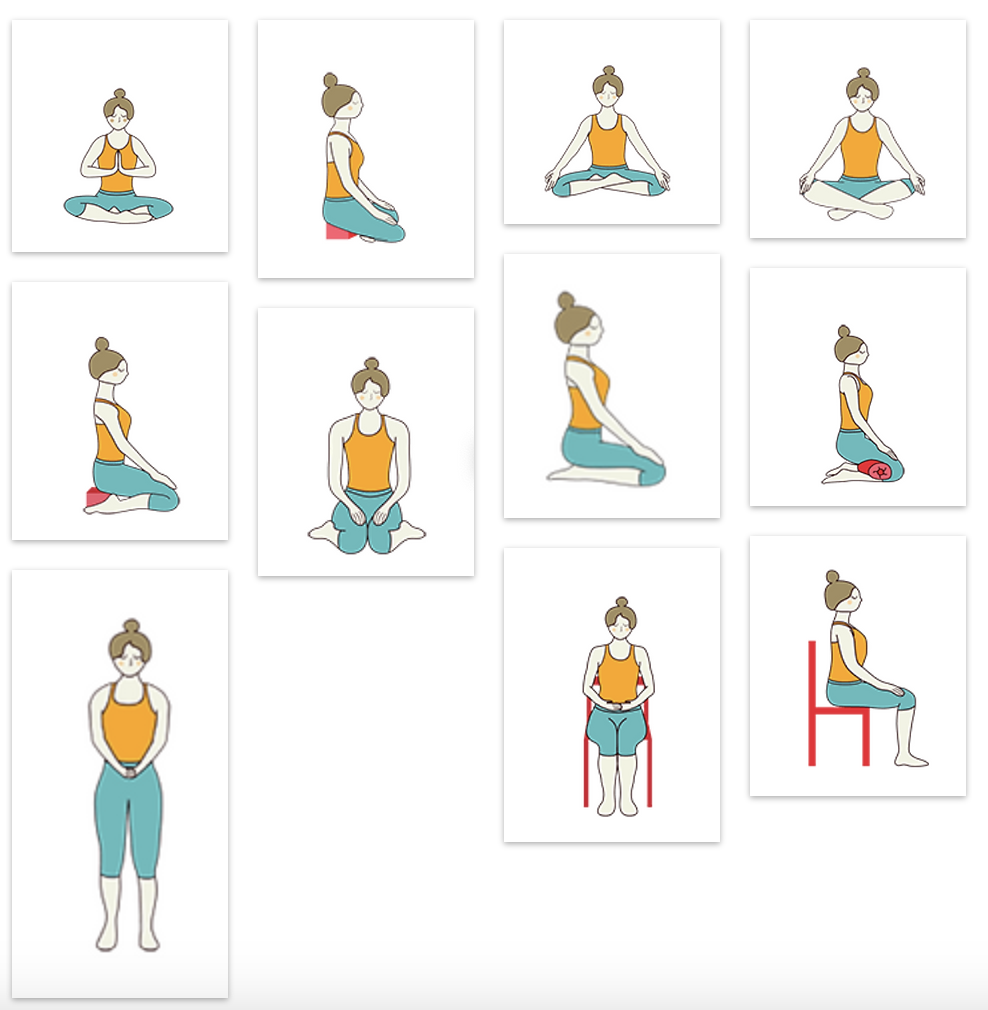Meditation has become a buzzword in the West, often tied to a vision of instant peace, enlightenment, or relaxation. But the reality of meditation goes far deeper than the idyllic images we see on Instagram.
Origins & Western Conceptions
Meditation finds its roots in ancient practices from Hinduism, Buddhism, and Taoism. Historically, it was more than just a practice; it was a way of life, tied to spiritual growth, self-awareness, and connection with the universe.
In the West, meditation has been reshaped as a tool for stress management, productivity, and mental health. While this shift is valuable, it can oversimplify its essence, turning it into another task on the to-do list rather than a transformative practice.
Styles of Meditation: Exploring the Currents
Meditation isn’t one-size-fits-all. Over the centuries, different schools and methods have emerged, each offering unique ways to cultivate peace, focus, and self-awareness. Here are some of the most popular styles:
1- Guided Meditation
A teacher or recording leads you through visualization, breathwork, or body awareness.
Allows you to relax while following gentle instructions.
Perfect for beginners or those with specific goals, like relaxation, sleep, or emotional healing.
2- Silent Meditation (Vipassana)
This introspective practice, rooted in Buddhist traditions, emphasizes observing your thoughts and sensations without judgment. Challenges the mind to embrace stillness and awareness. Helps cultivate mindfulness and deep insight.
3- Transcendental Meditation (TM)
Popularized in the West, TM involves silently repeating a personal mantra to settle the mind.
Simple, structured, and widely praised for reducing stress and enhancing creativity.
4- Zen Meditation (Zazen)
A cornerstone of Zen Buddhism, Zazen emphasizes seated meditation with a focus on the present moment.
Encourages simplicity and a deep connection to « just being. May include breath observation or working with koans (paradoxical questions).
5- Loving-Kindness Meditation (Metta)
Loving-Kindness Meditation, also known as Metta Bhavana, is a practice rooted in Buddhist traditions that focuses on cultivating unconditional love, compassion, and goodwill toward oneself and others. The word « metta » in Pali translates to loving-kindness or benevolence, while « bhavana » means cultivation or development.
This meditation practice encourages the development of a warm, positive attitude toward oneself, loved ones, neutral individuals, and even difficult people, eventually extending this kindness to all beings.
6- Body Scan Meditation
This practice is a mindfulness practice where you systematically focus your attention on each part of your body, from head to toe, noticing sensations, tension, or areas of discomfort without judgment to release tension and build awareness. It promotes relaxation, reduces stress, and helps release tension stored in the body. By grounding the mind in the present moment, it enhances self-awareness, emotional balance, and even pain management. Ideal for beginners and those seeking calm, it can be practiced lying down or sitting comfortably, with sessions as short as 10 minutes. Simply relax, breathe naturally, and connect with your body.
Especially helpful for managing stress or physical discomfort. Great for relaxation and connecting with physical sensations.
7- Movement-Based Meditation
Mindfulness in motion through practices combines intentional physical movement with mindfulness, helping you connect your body and mind in the present moment. Unlike seated meditation, it allows you to stay active while cultivating awareness and calm. Common forms include walking meditation, yoga, and Qigong, where movement flows naturally with your breath.
Improves physical well-being while grounding the mind.
Ideal for those who find stillness challenging or have hyperactive minds.
Promotes relaxation, emotional release, and a sense of flow.
Encourages a connection between body and mind. Allows you to cultivate awareness while moving, perfect for restless individuals.
8- Focus & Flow Meditation: A Gentle Path for Hyperactive Minds (My Approach)
This dynamic meditation practice works with your energy instead of against it. Designed for hyperactive minds, it balances the need for clarity with the natural rhythms of thought.
- Let your energy move naturally, creating a rhythm that feels intuitive and freeing.
Focus & Flow is ideal for those who struggle with sitting still or quieting a busy mind.
Focus & Flow: A Meditation Practice for Modern Minds
Meditation isn’t one-size-fits-all; it can take many forms depending on your goals, personality, or even your mood. One of the most transformative approaches is Focus & Flow, a dynamic meditation practice I’ve developed to guide hyperactive minds toward clarity and balance.
WHAT IS FOCUS & FLOW?
Focus & Flow Meditation is a unique approach I’ve designed specifically for those with hyperactive, creative, and dynamic minds. Rather than forcing stillness, it allows your thoughts to flow naturally while creating intentional focus and a sense of calm. Over time, the practice teaches your mind to rest, extending moments of silence and clarity for your benefit.
Through this routine, you’ll learn to observe your thoughts without attachment, letting them pass while discovering the messages meant for you. As I like to say:
“Messages you are meant to receive will find you when you listen from the silence.”
WHY CHOOSE FOCUS & FLOW?
Focus & Flow is designed for hyperactive and restless minds, offering a gentle, flexible approach to meditation:
- No rigid stillness required, making it approachable for dynamic minds.
- Balances energy, fostering natural calm instead of resisting mental activity.
- Adapts to daily life, whether seated, standing, or moving.
- Builds clarity and insight by channeling energy with intention.
- Gently extends moments of silence over time, allowing deeper rest.
This practice meets your mind where it is, cultivating a natural rhythm that feels freeing and empowering, helping you unlock your full potential with ease.
Benefits
- Calm
- Peace
- Clarity
- Energy
- Mindfulness
- Stress Release
- Creativity
- Focus
- Rest
- Intuition
- Grounding
- Concentration
- Harmony
- Awareness
- Freedom
- Serenity
- Patience
- Flow

THE PEFECT TIME TO PRACTICE
Take a 15-minute break to recharge, embrace the present moment, and invite peace into your day. Whether it’s in the morning to set the tone, during lunch for a mental reset, or before bed for a restful sleep, you deserve this time for you.
Struggles in Meditation (and How to Overcome Them)
Meditation can be challenging, especially when you’re just starting. Here are common struggles and simple ways to address them:
Racing Thoughts
- The Challenge: Your mind feels busy, making it hard to focus.
- The Solution: Accept the thoughts without judgment. Your mind is learning to slow down naturally.
Discomfort
- Challenge: Sitting still feels frustrating, or your body feels uncomfortable.
- The Solution: Adjust your posture or try shorter sessions to ease into the practice.
Staying Present
- The Challenge: Your attention keeps drifting away.
- The Solution: Use your breath, a mantra, or gentle movement to anchor your focus.
Inconsistency
- The Challenge: Struggling to make meditation a regular habit.
- The Solution: Treat it like brushing your teeth—make it a non-negotiable part of your daily routine.
Remember: Meditation isn’t about perfection; it’s about progress. Start small with just 15 minutes a day, and over time, you’ll find it becomes easier and more rewarding.
Which Posture for a Sustainable Meditation Practice?

The best meditation posture is one that allows you to be both comfortable and alert. Here are some suggestions:
Seated Cross-Legged: Sit comfortably on the floor with a cushion under your hips to support your lower back. This grounded posture helps promote calmness and focus.
Kneeling: Rest on your knees with a cushion between your legs, under your hips and/or behind your knees if they are tights.. This position aligns the spine and reduces restlessness.
Standing: Stand with feet hip-width apart, arms relaxed at your sides. This is perfect for those who feel too restless sitting, as it allows for subtle movements while staying present.
Seated on a Chair: Place feet flat on the ground, sitting upright but relaxed. Ideal if floor seating is uncomfortable, helping to maintain focus. Also great if you are at work or studying.
GROUND RULES FOR POSTURE
Knees Lower than Hips: Supports comfort and stability.
Back Straight: Aligns the spine for relaxation and focus.
Neck Long & Relaxed: Reduces tension in the upper body.
Face Relaxed: Keeps the mind calm and present.
Arms Relaxed: Hands can rest on your lap or knees
Belly Relaxed: Promotes deeper, more natural breathing.
EXPERIENCE THE SHIFT NOW
Meditation is about progress, showing up for yourself, and embracing the journey. You meet your mind where it is: dynamic, creative, and sometimes restless. Over time, this practice gently teaches your mind to rest, helping you observe your thoughts without attachment while creating space for clarity, calm, and insight. As you continue, you’ll notice subtle yet profound changes: a calmer mind, a sense of emotional balance, and the ability to approach life’s challenges with greater ease. The silence you cultivate will grow longer and more rewarding, allowing you to reconnect with your inner self and unlock the clarity already within you.
Start with just a few minutes a day and allow the practice to unfold naturally. This is your space, your rhythm, your time to transform.
Are you ready to embrace the transformative power of meditation? You have the tools, the time, and the space. Simply begin.
With love
All-Ways






